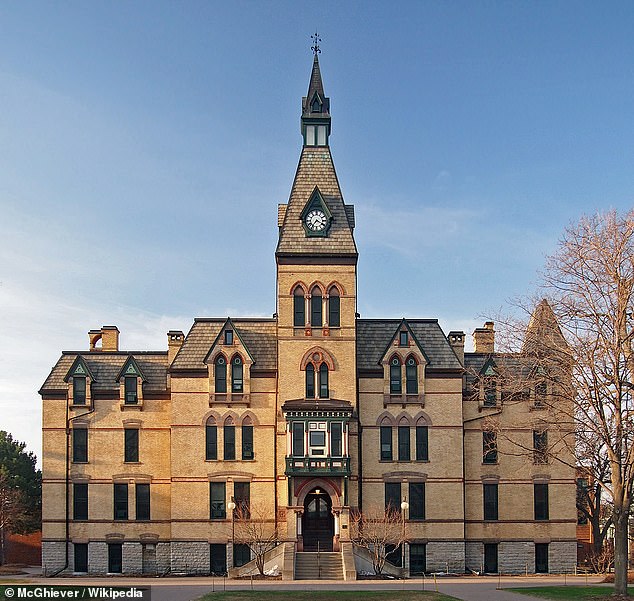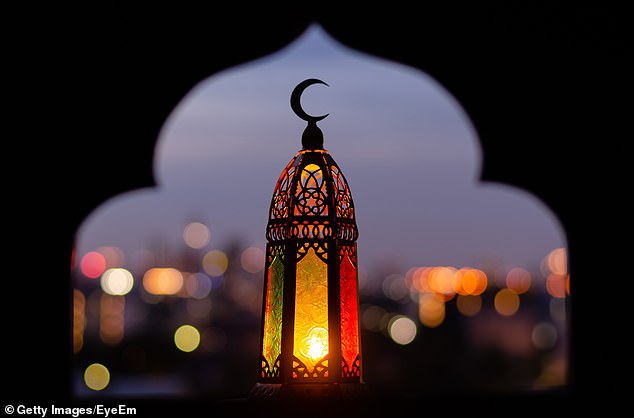Hamline University adjunct professor fired after showing painting of the Prophet Muhammad
>
A Minnesota adjunct professor has been fired after showing students a painting of the Prophet Muhammad in her class.
Erika López Prater, 42, was fired from her position at Hamline University in Saint Paul despite warning students ahead of time about the 14th-century images.
A new report from the New York Times indicates that the professor was fired by the president of Hamline University, Fayneese Miller, for putting academic freedom before respect for Muslim students.
Many observant Muslims do not believe in looking at images of the Prophet Muhammad, as they believe it can lead to worshiping an image.

Despite warnings from the adjunct professor, Aram Wedatalla, a Muslim in the class, said the image took her by surprise. “I’m like, ‘This can’t be real,'” Wedatalla said in an interview with the school newspaper.

In a letter sent to the students, Hamline University President Fayneese Miller apologized for the incident, saying that not offending Muslim students at the school is incredibly important.
In a letter sent to the students, Miller apologized for the incident and said that not offending Muslim students at the school is incredibly important.
‘It is not our intention to blame; rather, it is our intention to point out that in the classroom incident, where an image that Muslims could not look at was projected onto a screen and left for many minutes, respect for the observant Muslim students in that classroom should have replaced academic freedom,’ said Miller.
The New York Times report stated that the curriculum issued by the professor notified students that they would see holy figures in all religions, including the Prophet Muhammad and Buddha.
Additionally, López Prater allegedly gave the students a heads-up moments before the painting was to be displayed, giving them another chance to leave the room if they did not feel comfortable looking at the image.
Once again, no student raised any concerns or left the classroom during the October conference.
Despite the warnings, senior Aram Wedatalla, a Muslim in the class, said the image caught her off guard.
“I’m like, ‘This can’t be real,'” Wedatalla said in an iinterview with school newspaper.
“As a Muslim and a black woman, I don’t feel like I belong, and I don’t think I’ll ever belong in a community where they don’t value me as a member, and don’t show the same respect that I show them,” the student said.
Wedatalla, a member of the Muslim Students’ Association, later enlisted the support of Muslim students who were not in the class but called the incident an attack on their religion.

A Minnesota adjunct professor who showed students a painting of the Prophet Muhammad lost her job after the incident.

In a letter sent to the students, Miller apologized for the incident and said that not offending Muslim students at the school is incredibly important.

According to AboutIslam.net, the practice of avoiding images dates back centuries and stems from a fear that images will send the wrong message.
After class ended, Wedatalla stayed behind to talk to Lopez Prater.
The conversation led the professor to email her department chair, Allison Baker, to inform her of the situation.
Baker, the chair of the studio and digital art department, responded by saying, “It sounds like you did everything right.”
“I believe in academic freedom, so you have my support,” Baker wrote.
The group demanded that officials take action, and the move led to Lopez Prater, a first-time adjunct, not being welcomed back for the spring semester.
Deangela Huddleston, a senior at Hamline and a member of the Muslim Student Association, said of the incident, “Hamline teaches us that it doesn’t matter the intent, it’s the impact that matters.”
A Hamline spokesman said Lopez Prate “has received a letter of appointment for the fall semester and has taught the course through the end of the term.”
DailyMail.com contacted Hamline University officials for a statement on the professor’s dismissal, but did not receive a response by time of publication.

Wedatalla is a member of the Muslim Students Association and gained support from Muslim students who were not in the class but called the incident an attack on their religion.

“As a Muslim and a black person, I don’t feel like I belong, and I don’t think I’ll ever belong in a community where they don’t value me as a member, and don’t show the same respect that I show them,” Wedatalla said.

The university president also said in her letter that while academic freedom “is very important,” it “should not have to come at the expense of care and decency toward others.”

At a town hall after the incident, a Muslim guest speaker “compared showing the footage to teaching that Hitler was good,” according to the New York Times.
At a town hall after the incident, a Muslim guest speaker “compared showing the footage to teaching that Hitler was good,” according to the New York Times.
The university president also said in her letter that while academic freedom “is very important,” it should “it doesn’t have to come at the expense of caring and decency towards others.
In a statement to an exit last week, a representative from the school said that they strive to make all students ‘feel safe, supported and respected both inside and outside our classrooms.’
The firing also sparked a backlash from those who believed the firing was an attack on academic freedom.
An Islamic art historian wrote an essay defending Dr. López Prater and started a petition that received thousands of signatures demanding that the university board investigate the incident.
Another organization, PEN America, called his dismissal “one of the most egregious violations of academic freedom in recent memory.”
According to About Islam.netThe practice of avoiding images dates back centuries and stems from a fear that images will send the wrong message.
“In Islam there has always been a prohibition on making images of God and His Prophets,” the website states.
“At first, this ban was simply to avoid the temptation to worship the images themselves, as people had done for centuries,” the site continues.
‘As far as representing the Prophet is concerned, Muslims do not make images or statues of Prophet Muhammad for a clear reason. The reason is not that images or art are wicked or wicked, but that images can lead to misunderstanding.’
The author of the post, Idris Tawfiq, claims that portraying the Prophet Muhammad can make him seem like a holier figure, when he was just a man.
The Prophet Muhammad was a man. He was not a saint or a god, but a simple man. The love Muslims have for him is intense. Creating statues and images of that man can make people see something more in a man than he was,” Tawfiq writes.
